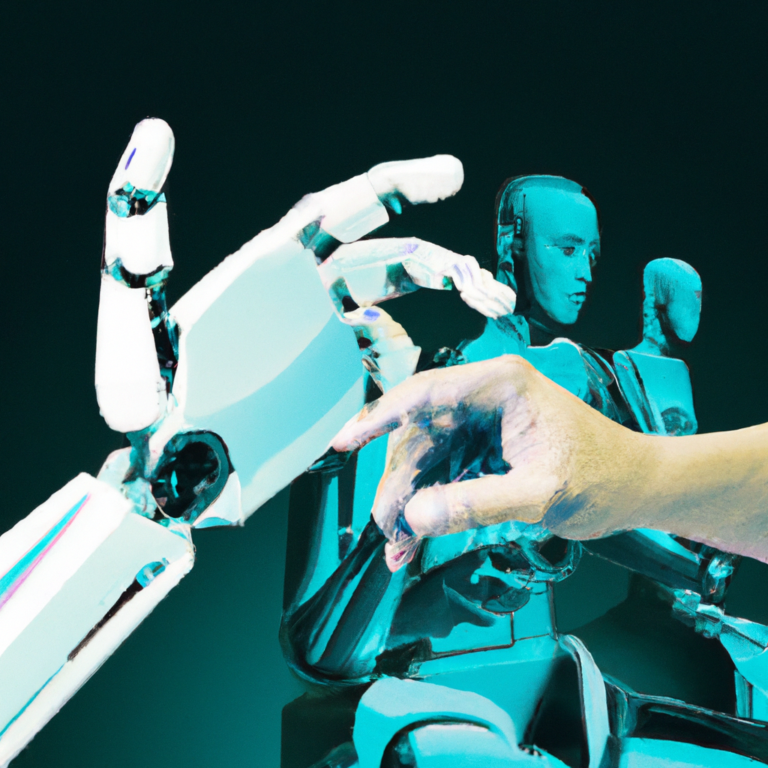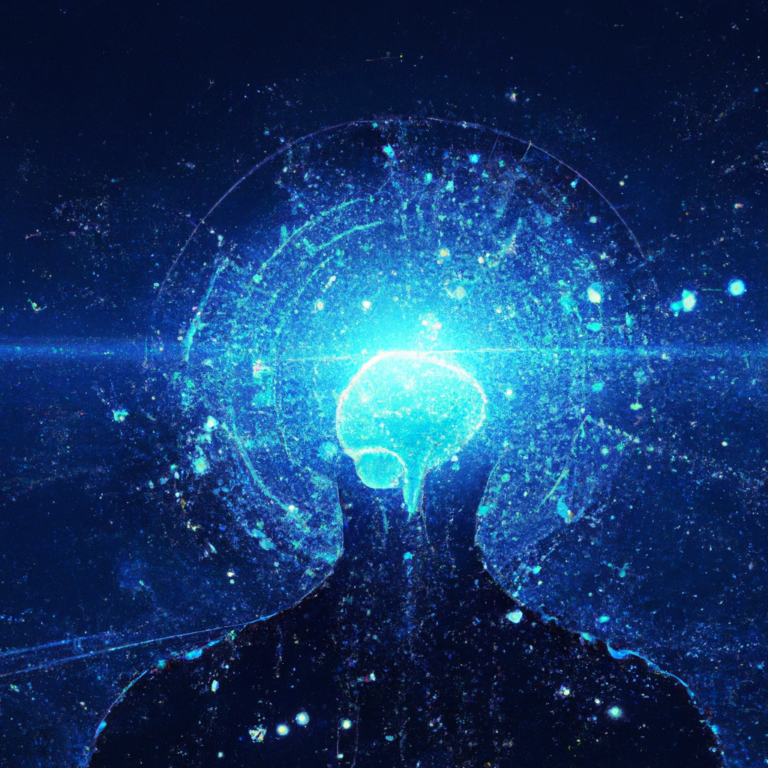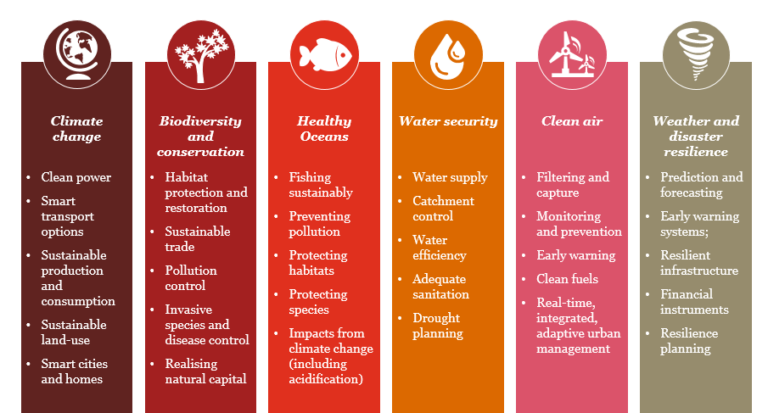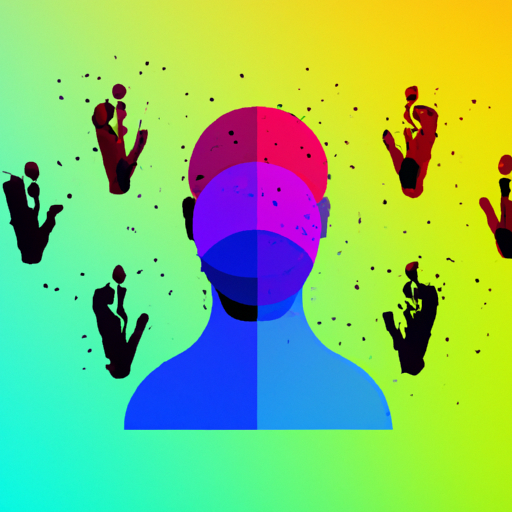AI And The Potential To Solve Global Problems: How Can AI Help Us Solve The World’s Biggest Problems?

In today’s fast-paced, interconnected world, the potential of Artificial Intelligence (AI) to solve global problems is both exhilarating and promising. From climate change to healthcare, poverty to education, AI holds the key to unlocking innovative solutions that can change the course of humanity. By harnessing the power of algorithms, machine learning, and big data, AI has the potential to revolutionize industries, improve efficiency, and empower individuals and communities. In this article, we will explore how AI can help us tackle the world’s biggest problems and pave the way for a brighter future.
Healthcare

Diagnosis and treatment
Artificial Intelligence (AI) has the potential to revolutionize healthcare by aiding in the diagnosis and treatment of diseases. With the ability to analyze vast amounts of medical data, AI algorithms can identify patterns and anomalies that may go unnoticed by human doctors. By using machine learning techniques, AI systems can continuously learn and improve their accuracy in diagnosing various conditions. This can lead to earlier detection of diseases, more accurate diagnoses, and personalized treatment plans for patients.
Drug development and discovery
The process of drug development and discovery is time-consuming and expensive. However, with the help of AI, this process can be accelerated and made more efficient. AI algorithms can sift through immense volumes of chemical and biological data to identify potential drug candidates. These algorithms can also predict the effectiveness of different compounds, reducing the need for extensive laboratory testing. By speeding up drug discovery, AI holds the promise of bringing life-saving medications to patients faster and at lower costs.
Patient monitoring
AI technologies have the potential to transform how patients are monitored and cared for. Through the use of wearable devices and advanced sensors, AI can collect real-time data on a patient’s vital signs, activity levels, and overall health. This data can be analyzed by AI algorithms to detect any deviations from normal patterns and alert healthcare professionals. By providing continuous monitoring, AI can enable early intervention and improve patient outcomes. Additionally, AI-powered monitoring systems can help reduce the workload on healthcare providers, enabling them to focus on more critical tasks.
Environmental Conservation
Climate change modeling and prediction
Climate change is one of the most pressing global challenges we face today. AI can play a crucial role in understanding and mitigating its impact. AI algorithms can analyze vast amounts of climate data to model and predict changes in weather patterns, sea levels, and temperature fluctuations. By providing accurate predictions, AI can help policymakers develop strategies to mitigate the effects of climate change and make informed decisions to protect vulnerable communities.
Natural disaster response
Natural disasters, such as hurricanes, earthquakes, and floods, can have devastating effects on communities. AI can help in the response and recovery efforts by analyzing satellite images, social media data, and other sources of information to identify affected areas and assess damages. This information can assist in deploying resources more efficiently and effectively, saving lives and reducing the impact on affected populations. AI can also help in predicting the occurrence and intensity of natural disasters, enabling communities to prepare and respond proactively.
Efficient resource management
Sustainable resource management is vital for the preservation of our planet. AI technologies can optimize resource allocation and utilization through advanced analytics and predictive modeling. By analyzing data on consumption patterns, population dynamics, and environmental factors, AI algorithms can identify opportunities for resource conservation and efficiency. This can range from optimizing energy consumption in buildings to reducing water wastage in agricultural practices. By incorporating AI into resource management strategies, we can move towards a more sustainable and responsible use of our natural resources.
Education
Customized learning
One of the challenges in education is catering to the unique needs and learning styles of individual students. AI can provide personalized learning experiences by adapting educational content and techniques to match each student’s abilities and preferences. By analyzing data on student performance, AI algorithms can identify knowledge gaps and tailor instructional materials accordingly. This personalized approach can enhance student engagement, improve retention rates, and foster a love for lifelong learning.
Intelligent tutoring systems
AI-powered intelligent tutoring systems can provide personalized support and guidance to students. These systems can analyze student responses, identify areas of difficulty, and provide immediate feedback and explanations. By adapting the pacing and content of instruction, AI can help students grasp challenging concepts more effectively. Intelligent tutoring systems also have the potential to extend access to quality education to underserved populations, bridging gaps in educational opportunities and improving overall learning outcomes.
Automated grading and feedback
Grading assignments and providing timely feedback can be time-consuming for educators. AI can automate these processes, enabling faster and more consistent assessments. AI algorithms can analyze student work, identify errors or areas of improvement, and provide instant feedback. This allows educators to focus on higher-level teaching tasks and spend more quality time with students. Automated grading and feedback also offer the benefit of objective and unbiased evaluation, ensuring fairness and consistency in assessments.
Poverty and Hunger
Optimizing food distribution
AI can help optimize the distribution of food resources, reducing waste and ensuring equitable access to nutritious food. By analyzing data on food production, supply chain logistics, and consumption patterns, AI algorithms can identify inefficiencies and recommend improvements. This can range from optimizing transportation routes to reducing post-harvest losses through better storage and preservation techniques. Optimizing food distribution can help alleviate hunger and improve food security, especially in underserved regions.
Predictive analytics for poverty reduction
AI algorithms can analyze vast amounts of socio-economic data to identify patterns and predict factors that contribute to poverty. By understanding the root causes of poverty, policymakers can develop targeted interventions and strategies for poverty reduction. These can include investments in education, job creation, and social support systems. By applying predictive analytics, AI can help allocate resources more efficiently and effectively, improving the overall effectiveness of poverty reduction initiatives.
Smart agriculture
AI can revolutionize agriculture by improving crop yields and reducing environmental impact. Through the use of sensors, drones, and AI algorithms, farmers can monitor soil conditions, optimize irrigation, and detect crop diseases or pests. This enables more precise and targeted use of fertilizers, pesticides, and water resources. With AI-assisted agriculture, farmers can increase productivity, reduce the use of chemicals, and minimize waste, ultimately contributing to sustainable farming practices and food security.
Energy
Energy optimization and management
AI can help optimize energy consumption and management in various sectors. By analyzing data on energy usage, weather patterns, and building structures, AI algorithms can identify opportunities for energy efficiency and cost savings. This can include recommendations for adjusting heating and cooling systems, optimizing lighting, and managing peak demand. Energy optimization not only reduces greenhouse gas emissions but also helps organizations and individuals save on energy bills, making sustainable practices more accessible and affordable.
Smart grids
Smart grids, powered by AI, can revolutionize the way electricity is generated, transmitted, and consumed. AI algorithms can analyze data from smart meters, weather forecasts, and energy markets to optimize energy supply and demand. By ensuring a balanced and efficient distribution of electricity, smart grids can reduce blackouts, improve overall reliability, and integrate renewable energy sources seamlessly. AI-enabled smart grids can also empower consumers to make smarter energy choices, contributing to a more sustainable and decentralized energy system.
Renewable energy forecasting
AI can enhance the reliability and efficiency of renewable energy sources by providing accurate forecasting. By analyzing weather data, historical patterns, and energy production data, AI algorithms can predict the output of renewable energy sources such as solar and wind. This allows energy grid operators to plan and balance energy supply, reducing dependency on fossil fuels and optimizing the use of renewable resources. With AI-enabled renewable energy forecasting, we can accelerate the transition to a cleaner and more sustainable energy future.
Transportation
Traffic management and optimization
AI can optimize traffic flow, reducing congestion and improving transportation efficiency. By analyzing data from sensors, cameras, and GPS devices, AI algorithms can identify patterns and predict traffic conditions. This information can be used to optimize traffic signal timings, regulate traffic flow, and suggest alternate routes. Intelligent traffic management can reduce travel time, fuel consumption, and emissions, making transportation more sustainable and improving overall mobility for individuals and communities.

Autonomous vehicles
Autonomous vehicles, powered by AI, have the potential to transform the transportation industry. By leveraging sensors, computer vision, and machine learning algorithms, autonomous vehicles can navigate roads and make real-time decisions without human intervention. This technology has the potential to improve road safety, reduce accidents, and provide increased mobility for people with disabilities or limited access to transportation. Autonomous vehicles also hold the promise of reducing traffic congestion and optimizing energy consumption by enabling platooning and more efficient routing algorithms.
Predictive maintenance
AI can enable predictive maintenance in transportation systems, reducing downtime and increasing efficiency. By analyzing data from sensors and monitoring systems, AI algorithms can detect early signs of equipment failure or deterioration. This allows for proactive maintenance interventions before any major issues occur, reducing the likelihood of breakdowns and minimizing the impact on operations. Predictive maintenance not only improves reliability but also reduces maintenance costs and extends the lifespan of transportation infrastructure and vehicles.
Cybersecurity
Threat detection and prevention
AI can enhance cybersecurity by detecting and preventing various types of threats. By analyzing network traffic, system logs, and user behavior, AI algorithms can identify anomalies and patterns associated with malicious activities. This allows for real-time detection and response to cyber threats, preventing unauthorized access, data breaches, and other cyber attacks. AI can also continuously learn and adapt to evolving threats, improving the overall cybersecurity posture of organizations and individuals.
Malware analysis and identification
Malware is a significant cybersecurity threat, and AI can help in its analysis and identification. By analyzing the code, behavior, and characteristics of malware samples, AI algorithms can identify and classify new strains of malware. This enables cybersecurity experts to develop effective countermeasures, such as antivirus signatures or intrusion detection systems. AI-based malware analysis can accelerate the identification and response to emerging malware threats, protecting digital assets and ensuring the integrity of computer systems.
Data protection and privacy
AI can help safeguard sensitive data and protect privacy in an increasingly digital world. By using encryption, AI algorithms can ensure that data remains secure during storage and transmission. AI technologies for data protection can also identify potential vulnerabilities or privacy risks in systems and alert administrators to take appropriate actions. Furthermore, AI can assist in compliance with privacy regulations by automating data anonymization and ensuring that sensitive information is appropriately managed. By prioritizing data protection and privacy, AI can build trust and enable the responsible use of technology.
Finance
Fraud detection and prevention
Financial fraud is a significant challenge in the modern digital age, and AI can play a crucial role in detecting and preventing fraudulent activities. By analyzing transaction data, user behavior, and patterns, AI algorithms can identify anomalies and suspicious activities. This can help financial institutions and organizations detect and prevent various types of fraud, such as credit card fraud, identity theft, and money laundering. AI-powered fraud detection systems can save billions of dollars for businesses and protect consumers from financial losses.
Risk assessment and management
AI can improve risk assessment and management in the financial sector by analyzing vast amounts of data and identifying potential risks. By considering historical patterns, market conditions, and other data sources, AI algorithms can predict and assess potential risks associated with investments, loans, or insurance policies. This enables financial institutions and individuals to make more informed decisions and adjust risk exposure accordingly. AI-based risk assessment can help prevent financial crises, optimize investment portfolios, and improve the overall stability of the financial system.
Algorithmic trading
AI technologies have transformed the financial industry by enabling algorithmic trading. By analyzing market data, news, and historical patterns, AI algorithms can make real-time trading decisions without human intervention. This can lead to faster execution, reduced transaction costs, and increased liquidity in financial markets. Algorithmic trading also has the potential to eliminate human biases and emotions, making investment decisions more objective and data-driven. However, it is important to ensure proper regulation and oversight to prevent market manipulation and other potential risks associated with algorithmic trading.
Social Justice
Criminal justice and law enforcement
AI can assist in criminal justice and law enforcement by analyzing vast amounts of data to assist in investigations, crime prevention, and risk assessment. By using machine learning algorithms, AI can identify patterns associated with criminal activities, assisting law enforcement agencies in targeting areas or individuals with higher risks. AI can also help in managing and analyzing video surveillance footage, facial recognition, and identifying potential suspects. However, it is vital to ensure the responsible use of AI in criminal justice, as biases and privacy concerns can arise.
Bias detection and elimination
AI has the potential to detect and eliminate biases in various domains, ranging from hiring practices to content recommendation systems. By analyzing data and identifying patterns, AI algorithms can help identify instances of bias and discrimination. This enables organizations and policymakers to take corrective actions, ensuring fairness and equal opportunities for all individuals. However, it is essential to develop transparent and accountable AI systems to ensure that biases are detected and addressed effectively.
Decision-making support
AI can provide decision-making support in various contexts, including social justice issues. By analyzing data, conducting simulations, and considering different scenarios, AI algorithms can assist policymakers, judges, and other decision-makers in making informed and equitable decisions. AI can help identify potential unintended consequences, evaluate the impact of policies or regulations, and uncover insights that can contribute to more effective decision-making. However, it is crucial to consider ethical considerations and ensure that human values and judgment are incorporated into the decision-making process.
Communication
Language translation and interpretation
AI-powered language translation and interpretation systems have revolutionized how we communicate across different languages and cultures. By analyzing vast amounts of multilingual data, AI algorithms can accurately translate text or speech in real-time. This not only facilitates communication between individuals but also opens up opportunities for collaboration, business expansion, and cultural exchange on a global scale. AI-powered translation systems continue to improve and become more accurate, breaking down language barriers and connecting people from diverse backgrounds.
Natural language processing
Natural language processing (NLP) is a subfield of AI that focuses on understanding and interpreting human language. NLP algorithms can analyze text or speech, extract meaning, and respond in a manner that simulates human conversation. This technology has applications in various domains, including chatbots, virtual assistants, customer service, and content analysis. NLP-powered systems can enhance communication efficiency, automate tedious tasks, and improve user experiences by providing personalized and relevant information.
Speech recognition
AI-powered speech recognition systems convert spoken language into written text, enabling hands-free communication and automation of tasks. By analyzing audio data and using machine learning algorithms, AI can accurately transcribe speech in real-time. Speech recognition technology has applications in various fields, including transcription services, voice-controlled devices, and accessibility tools for individuals with disabilities. AI-powered speech recognition systems continue to evolve and improve, making communication more inclusive and accessible for everyone.
Want to write articles like us? Get your copy of AI WiseMind here!






